AI Entertainment
Discover the Powerful Impact of AI in Film and Television Production

Join us as we explore the incredible influence of AI on film and television production.
Prepare to be amazed as we delve into the groundbreaking advancements that have revolutionized the industry.
From automated script analysis to intelligent editing and post-production, AI has opened doors to limitless creativity and personalized audience engagement.
Join us as we uncover the power of this remarkable technology and its ability to shape the future of entertainment.

Get ready to experience the freedom of AI in film and television production.
Key Takeaways
- Real-time recognition and emotion detection in script analysis allows for informed decisions about casting, directing, and marketing strategies.
- Virtual set design and creation enhances visual storytelling, saves time and resources, and opens up endless possibilities for creative expression.
- Enhanced visual effects and CGI elevate the quality and realism of visual elements in film and television production, expanding creative possibilities for filmmakers and storytellers.
- Intelligent editing and post-production processes automate time-consuming tasks, making the process more efficient and cost-effective, allowing filmmakers to focus on their creative vision and storytelling.
Automated Script Analysis
How can AI revolutionize our approach to script analysis in film and television production?
With the power of AI, we can now achieve real-time recognition and emotion detection in script analysis. This technology allows us to analyze the emotional impact of a script, helping us understand how it will resonate with audiences. By using AI algorithms, we can quickly identify key emotional moments and analyze the overall tone of a script.
This enables us to make informed decisions about casting, directing, and even marketing strategies. With real-time recognition and emotion detection, we can save time and resources by streamlining the script analysis process.

As we transition into the next section about virtual set design and creation, AI continues to play a vital role in revolutionizing the entire production process.
Virtual Set Design and Creation
Virtual set design and creation revolutionizes the production process by enhancing visual storytelling and immersing audiences in captivating digital environments. With the advancements in AI technology, filmmakers can now create realistic backgrounds and immersive storytelling experiences without the need for physical sets.
Utilizing AI-powered software, virtual sets can be designed and built, allowing filmmakers to easily manipulate and control every aspect of the environment. This level of control not only saves time and resources, but also opens up endless possibilities for creative expression.
Virtual set design enables filmmakers to transport their audiences to any location, whether it’s a historical period, a futuristic world, or even a completely imaginary realm. The result is a seamless integration of visual effects and storytelling, captivating viewers and allowing them to fully immerse themselves in the narrative.

Enhanced Visual Effects and CGI
With the help of AI technology, we can now elevate visual effects and CGI in film and television production to new heights. Thanks to AI, we can achieve realistic character animation that was previously limited by technological constraints.
AI algorithms can analyze real-life movements and expressions, allowing animators to create digital characters that look and move in a more lifelike manner.
Additionally, AI enables the creation of immersive virtual environments that transport audiences to fantastical worlds. Through advanced rendering techniques and machine learning algorithms, AI can generate highly detailed and realistic backgrounds, landscapes, and special effects.
This not only enhances the visual experience but also expands the creative possibilities for filmmakers and storytellers. AI is revolutionizing the way visual effects and CGI are produced, providing filmmakers with the tools to bring their imagination to life on the screen.
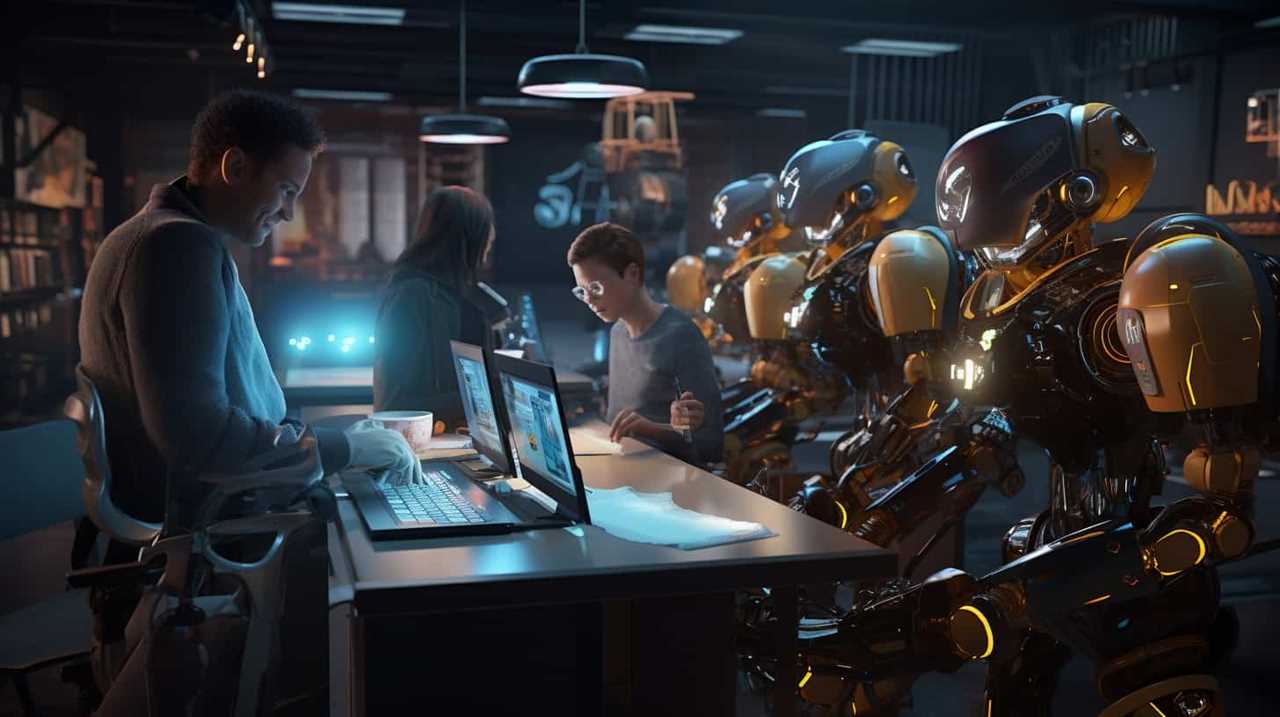
Intelligent Editing and Post-Production
We frequently utilize AI in film and television production to enhance editing and post-production processes. One of the key areas where AI has made significant advancements is in AI-driven color grading.
Traditionally, color grading was a time-consuming and labor-intensive task that required skilled professionals. However, with AI, color grading can now be automated, saving both time and resources. AI algorithms analyze the visual content of the footage and make adjustments to the color, contrast, and saturation to create a desired look.
Another area where AI has made a significant impact is in automated sound mixing. AI algorithms can analyze the audio tracks, identify different elements such as dialogue, music, and sound effects, and automatically balance and mix them to create a seamless and immersive audio experience.
These advancements in AI-driven color grading and automated sound mixing have revolutionized the editing and post-production processes, making them more efficient and cost-effective. With these powerful tools, filmmakers can focus more on their creative vision and storytelling.
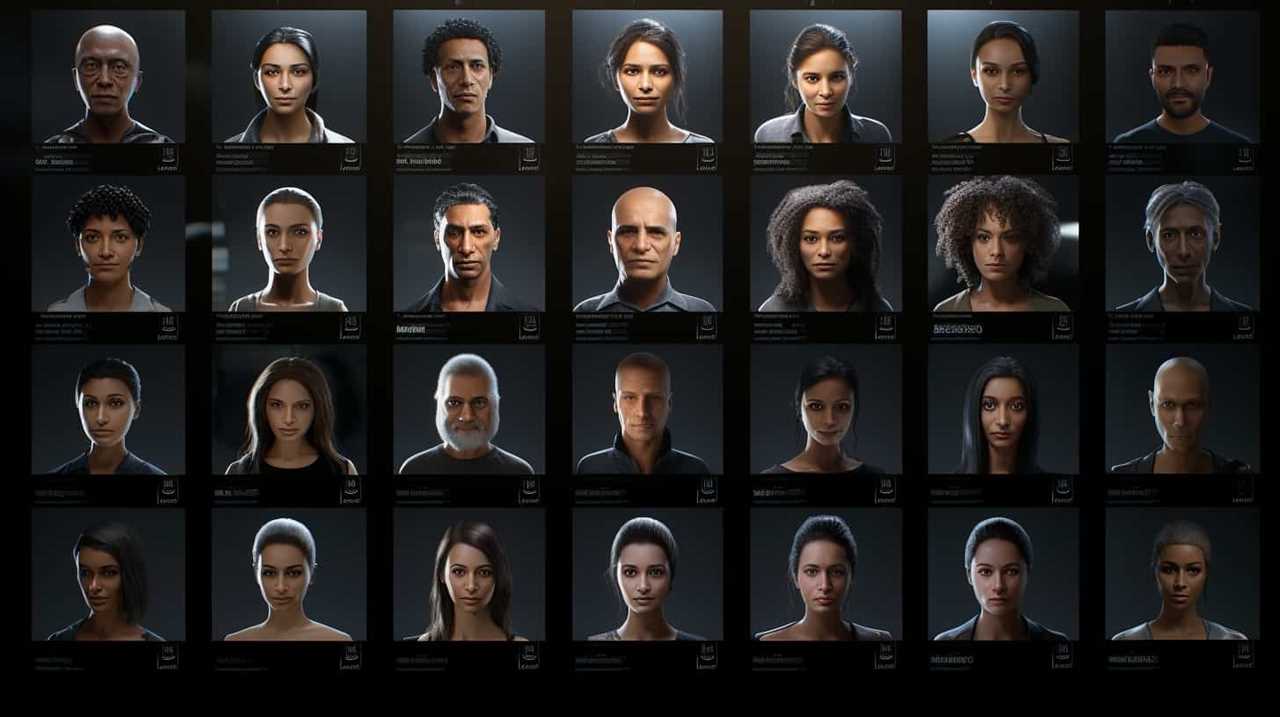
This seamless integration of AI in the editing and post-production stages sets the stage for the next section, which explores the role of AI in personalized audience engagement.
Personalized Audience Engagement
Moving beyond the editing and post-production stages, AI continues to revolutionize film and television production by enabling personalized audience engagement. With the help of AI, filmmakers and content creators can now profile their audience and tailor their content to evoke specific emotions and create a more immersive experience. Here are three ways AI enables personalized audience engagement:
- Emotion detection: AI algorithms analyze facial expressions, tone of voice, and body language to gauge the audience’s emotional response in real-time. This allows filmmakers to adjust the narrative and pacing accordingly, ensuring a more emotionally resonant experience.
- Interactive storytelling: AI-powered interactive experiences allow the audience to actively participate in the narrative, making choices that impact the story’s outcome. This level of interactivity enhances engagement and empowers the audience to have a unique and personalized viewing experience.
- Dynamic content recommendation: AI algorithms analyze audience preferences and viewing habits to deliver personalized recommendations. By suggesting content tailored to each individual’s interests, AI enhances the freedom of choice and ensures that viewers are presented with content that aligns with their preferences.
With AI’s ability to profile audiences and facilitate interactive storytelling, film and television production can now create a more personalized and engaging experience for viewers, giving them the freedom to explore content that resonates with them on a deeper level.
Frequently Asked Questions
How Does Automated Script Analysis Work and What Are Its Limitations in Film and Television Production?
Automated script analysis in film and television production utilizes AI to analyze scripts, identify patterns, and provide insights. However, its limitations include the inability to understand nuanced emotions and creative elements, relying heavily on data-driven analysis.

What Are the Key Advantages of Using Virtual Set Design and Creation in the Industry?
Using virtual set design in the industry has numerous benefits. It allows for more creative freedom, reduces production costs, and enhances visual effects. The impact of this technology on film and television production is powerful.
How Does AI Contribute to Enhanced Visual Effects and CGI, and What Are Some Notable Examples?
AI contributes to enhanced visual effects and CGI by providing advanced algorithms and machine learning capabilities. Notable examples include the use of AI for realistic rendering of virtual environments and the creation of lifelike characters through advanced character animation techniques.
Can Intelligent Editing and Post-Production Improve the Overall Quality and Efficiency of Film and Television Production?
Intelligent editing and post-production can greatly enhance the overall quality and efficiency of film and television production. By utilizing AI technology, we can streamline the editing process, improve visual effects, and deliver a more polished end product.
How Can Personalized Audience Engagement Be Achieved Through AI, and What Benefits Does It Bring to the EntertAInment Industry?
Personalized audience engagement can be achieved through AI by leveraging techniques like personalized audience targeting and AI-driven content recommendations. These methods bring numerous benefits to the entertainment industry, enhancing audience satisfaction and maximizing content effectiveness.

Conclusion
In conclusion, the powerful impact of AI in film and television production is undeniable.
From automated script analysis to virtual set design and creation, enhanced visual effects and CGI, and intelligent editing and post-production, AI has revolutionized the industry.
By harnessing the capabilities of AI, filmmakers and producers are able to create more immersive and captivating experiences for audiences.
As the saying goes, ‘technology is the art of the possible,’ and AI has truly unlocked new possibilities in the world of filmmaking.

Ava combines her extensive experience in the press industry with a profound understanding of artificial intelligence to deliver news stories that are not only timely but also deeply informed by the technological undercurrents shaping our world. Her keen eye for the societal impacts of AI innovations enables Press Report to provide nuanced coverage of technology-related developments, highlighting their broader implications for readers.
AI Entertainment
Unveiling the Future: AI’s Impact on Film and TV Production

Prepare for an exciting journey where technology meets creativity, a realm without boundaries, unveiling the next phase of cinematic and television production enchantment. Artificial intelligence is poised to revolutionize the industry, redefining the way things operate in the business.
From pre-production to post-production, the impact of AI will be felt in ways we never thought possible. Join us as we explore the role of AI in enhancing creative processes, driving visual effects, and reshaping the distribution landscape.
Get ready for a future where the freedom of imagination knows no bounds.
Key Takeaways
- AI streamlines and improves efficiency in pre-production and creative processes, such as script creation, storyline generation, and casting decisions.
- AI-driven visual effects and animation reduce production time and costs, push the boundaries of visual storytelling, and enable virtual production.
- AI revolutionizes post-production by automating tasks like shot selection and color grading, transforming the way films and TV shows are edited and graded.
- AI-powered content delivery systems revolutionize distribution methods, enabling personalized and targeted content delivery, automated delivery processes, and a seamless distribution experience.
AI’s Role in Pre-production
In pre-production, AI revolutionizes the planning and organization of film and TV projects. With the advent of AI technology, the process of creating scripts has been streamlined and made more efficient. AI is now capable of generating scripts based on a variety of parameters, such as genre, tone, and plot elements. This not only saves time for writers, but also offers new creative possibilities by suggesting unique storylines and plot twists.

Furthermore, AI has also played a significant role in assisting casting decisions. By analyzing vast amounts of data, including previous performances, audience feedback, and market trends, AI algorithms can provide valuable insights to filmmakers. This helps in selecting the most suitable actors for specific roles, enhancing the chances of a successful production.
Enhancing Creative Processes With AI
AI’s integration into pre-production hasn’t only revolutionized the film and TV industry, but it continues to enhance the creative processes involved in bringing stories to life.
Here are four ways AI is enhancing creative processes in storytelling:
- AI in Storytelling: AI algorithms are being developed to analyze vast amounts of data and generate story ideas, plot structures, and character arcs. This assists writers in brainstorming and developing unique and engaging narratives.
- AI-Assisted Casting: AI technology can analyze facial features, body language, and acting skills to help casting directors find the perfect actors for specific roles. This saves time and improves the accuracy of casting decisions.
- Visual Effects and Animation: AI algorithms are being used to generate realistic visual effects and animations, reducing the time and effort required for manual creation. This allows for more intricate and visually stunning storytelling.
- Music and Sound Design: AI can analyze the emotional content of a scene and generate customized music and sound effects that enhance the audience’s experience. This helps create a more immersive and impactful storytelling experience.
As AI technology continues to evolve, it will undoubtedly play an increasingly significant role in enhancing the creative processes involved in film and TV production.
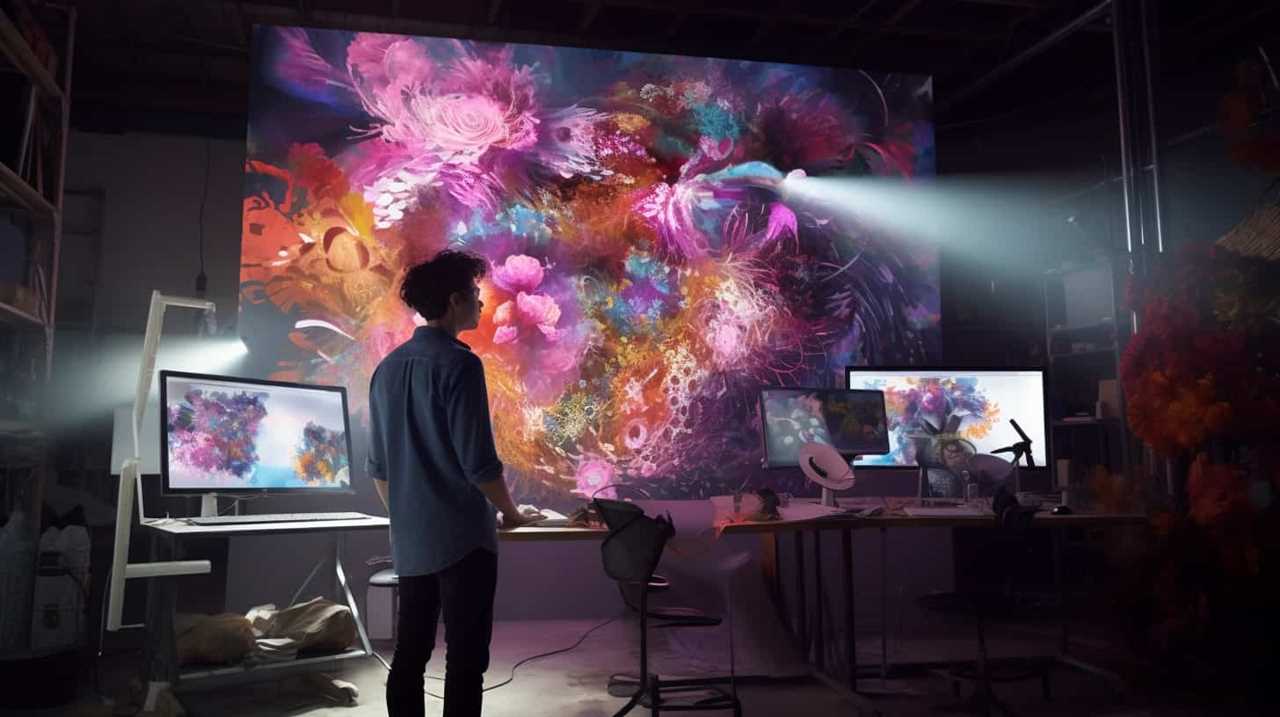
AI-Driven Visual Effects and Animation
AI-driven visual effects and animation have revolutionized the film and TV industry, transforming the way captivating and realistic imagery is created. With the advancements in AI technology, real-time rendering has become more accessible, allowing filmmakers and animators to see immediate results and make adjustments on the fly. This has significantly reduced production time and costs, as well as increased creative freedom.
Virtual production is another area where AI has made a significant impact. By combining AI algorithms with motion capture technology, filmmakers can create virtual environments and characters that seamlessly integrate with live-action footage. This opens up endless possibilities for storytelling and allows filmmakers to bring their visions to life in ways that were previously unimaginable.
AI-driven visual effects and animation have truly pushed the boundaries of what’s possible in the world of film and TV production.
Revolutionizing Post-Production With AI
We have seen a significant revolution in the post-production process through the integration of AI technology. This has brought about several advancements that have transformed the way films and TV shows are edited and color graded.

Here are four ways AI is revolutionizing post-production:
- Automating editing: AI algorithms can analyze vast amounts of footage and automatically select the best shots, saving editors time and effort.
- AI-assisted color grading: AI can intelligently enhance and adjust the colors in a scene, ensuring consistency and giving filmmakers more creative control.
- Streamlining workflows: AI-powered tools help streamline post-production workflows by automating repetitive tasks and improving efficiency.
- Real-time visual effects: AI algorithms can generate realistic visual effects in real-time, allowing filmmakers to see their vision come to life instantly.
As we explore the future of AI in film and TV distribution, these advancements in post-production will play a crucial role in shaping the industry’s landscape.
The Future of AI in Film and TV Distribution
In the future, our distribution methods for film and TV will undergo a significant transformation with the integration of AI technology. AI powered content delivery systems will revolutionize how films and TV shows are distributed, making the process more efficient and personalized.
With AI, content can be delivered to audiences based on their preferences and viewing habits, ensuring a tailored experience for each individual. AI algorithms will analyze vast amounts of data to predict audience behavior and engagement, allowing content creators and distributors to make informed decisions about the type of content to produce and how to promote it. This will result in more targeted marketing campaigns and increased audience engagement.
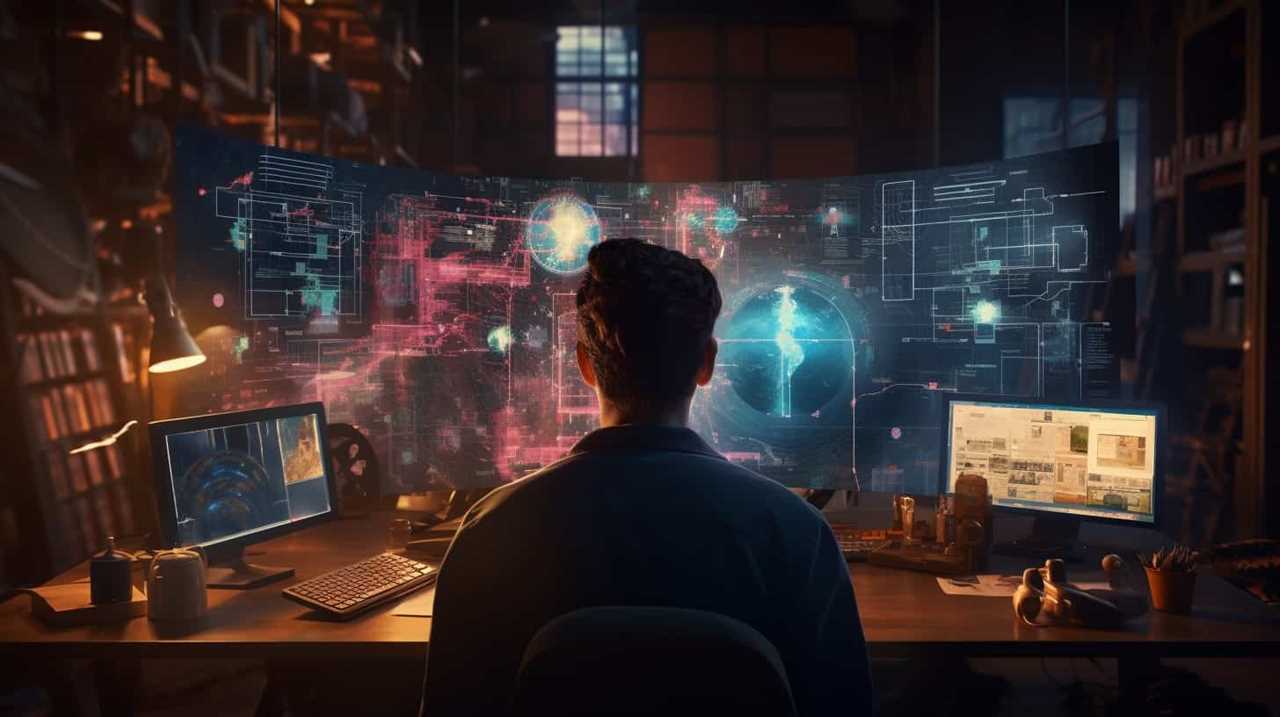
AI will also enable real-time monitoring and analysis of viewership data, providing valuable insights for content creators and distributors to optimize their strategies.
Frequently Asked Questions
How Does AI Contribute to Streamlining the Pre-Production Process in Film and TV Production?
AI contributes to streamlining the pre-production process in film and TV production by enhancing efficiency and automation. It optimizes tasks like script analysis, casting, location scouting, and budgeting, allowing for a more streamlined and cost-effective workflow.
What Are Some Examples of How AI Can Enhance the Creativity and Innovation in the Filmmaking Process?
Improving storytelling and enhancing production efficiency are key benefits of AI in the filmmaking process. By analyzing data and patterns, AI can generate innovative ideas, suggest edits, and automate mundane tasks, allowing creators to focus on their artistic vision.
How Does AI Technology Revolutionize the Creation of Visual Effects and Animation in the EntertAInment Industry?
AI revolutionizes the creation of visual effects and animation in the entertainment industry by automating processes and enabling real-time rendering. It enhances creativity and innovation, pushing the boundaries of what can be achieved in film and TV production.
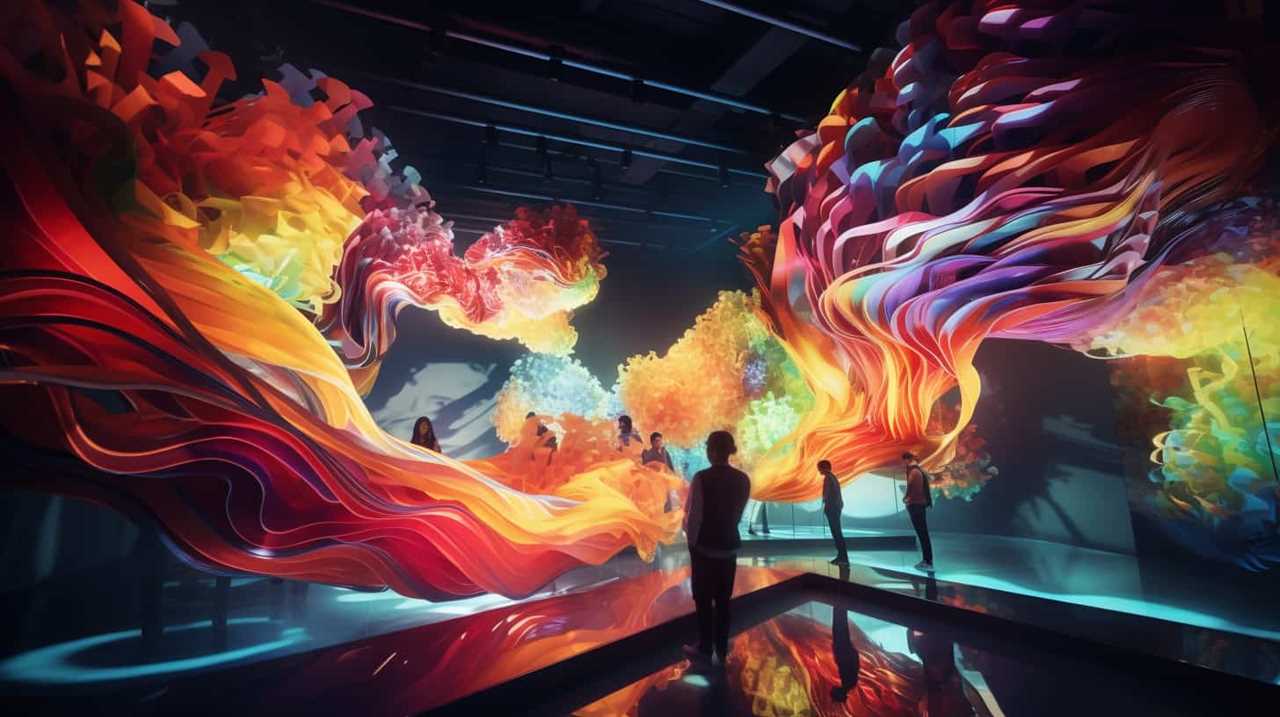
Can You Provide Some Insights Into How AI Is Transforming the Post-Production Phase of Film and TV Production?
AI is revolutionizing post-production in film and TV production. Through automation and increased efficiency, AI technology streamlines processes like editing, sound design, and visual effects, allowing for faster and more cost-effective production.
What Role Will AI Play in the Future of Film and TV Distribution, and How Will It Impact the Way Content Is Delivered to Audiences?
AI will revolutionize film and TV distribution, transforming how content reaches audiences. By curating personalized recommendations, AI enhances viewer engagement. With this future of AI-driven curation, audiences will have the freedom to explore and discover content like never before.
Conclusion
In conclusion, AI is poised to revolutionize the film and TV production industry. With its ability to streamline pre-production processes, enhance creative workflows, and generate stunning visual effects, AI has already begun to make its mark.
As it continues to evolve, AI holds the potential to reshape post-production and even transform the way content is distributed. Like a master conductor orchestrating a symphony of innovation, AI is set to lead us into a future where creativity and technology harmoniously merge.
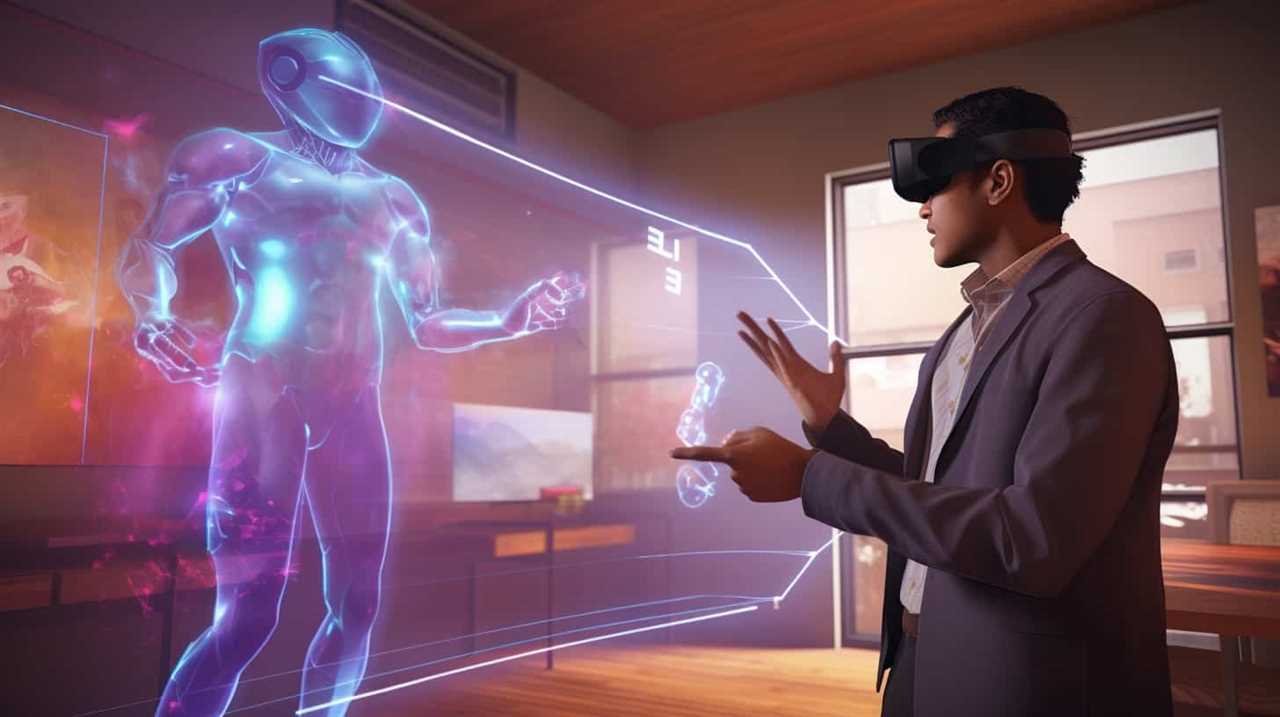
Ava combines her extensive experience in the press industry with a profound understanding of artificial intelligence to deliver news stories that are not only timely but also deeply informed by the technological undercurrents shaping our world. Her keen eye for the societal impacts of AI innovations enables Press Report to provide nuanced coverage of technology-related developments, highlighting their broader implications for readers.
AI Entertainment
Unlocking the Potential of Virtual Reality and Generative AI in Gaming’s Future

Imagine a world where the limits of reality are exceeded, and endless possibilities await discovery. A place where virtual reality and generative AI come together to create a gaming experience like no other in its level of depth and engagement.
In this future, we unlock the true potential of gaming, blurring the boundaries between virtual and real-life experiences. With our article, we delve into the transformative power of virtual reality and generative AI, paving the way for a future of gaming that knows no limits.
Get ready to embark on a journey that will set your imagination free.
Key Takeaways
- Advancements in virtual reality technology have transformed immersive experiences in gaming, with seamless integration, high-resolution graphics, and intuitive controls.
- Generative AI has the potential to revolutionize the gaming experience by enabling real-time content generation and procedural adaptation to player behaviors.
- The integration of virtual reality technology in gaming blurs the boundaries between virtual and real-life experiences, offering lifelike environments, physical interaction, and deepening emotional connections.
- Virtual reality enhances immersion through storytelling, creating a deeper emotional connection with game characters and narratives, increased player agency, and a more engaging and impactful gaming experience.
The Evolution of Virtual Reality in Gaming
In our exploration of the evolution of virtual reality in gaming, we’ve witnessed a remarkable transformation in the immersive experiences offered to players. Through evolutionary advancements and technological breakthroughs, virtual reality has transcended its initial limitations and has become a powerful tool for creating realistic and interactive gaming environments.
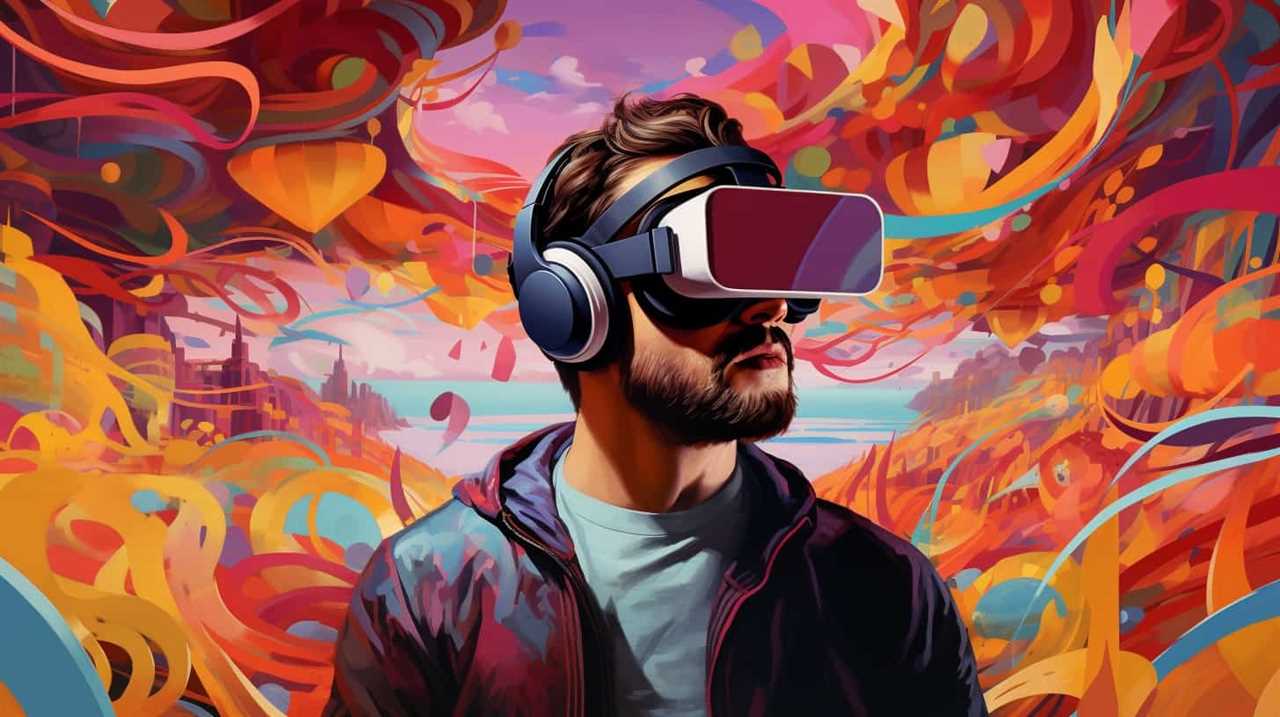
Gone are the days of clunky headsets and limited movement; today’s virtual reality systems offer seamless integration, high-resolution graphics, and intuitive controls that allow players to truly immerse themselves in a virtual world.
The constant push for innovation in this field has resulted in the development of cutting-edge features such as haptic feedback, motion tracking, and spatial audio, further enhancing the immersive experience.
As technology continues to advance, we can only imagine the exciting possibilities that lie ahead for virtual reality in gaming.
Harnessing the Power of Generative AI in Gaming
Continuing our exploration of the evolution of virtual reality in gaming, we now delve into the exciting realm of harnessing the power of generative AI to revolutionize the gaming experience.
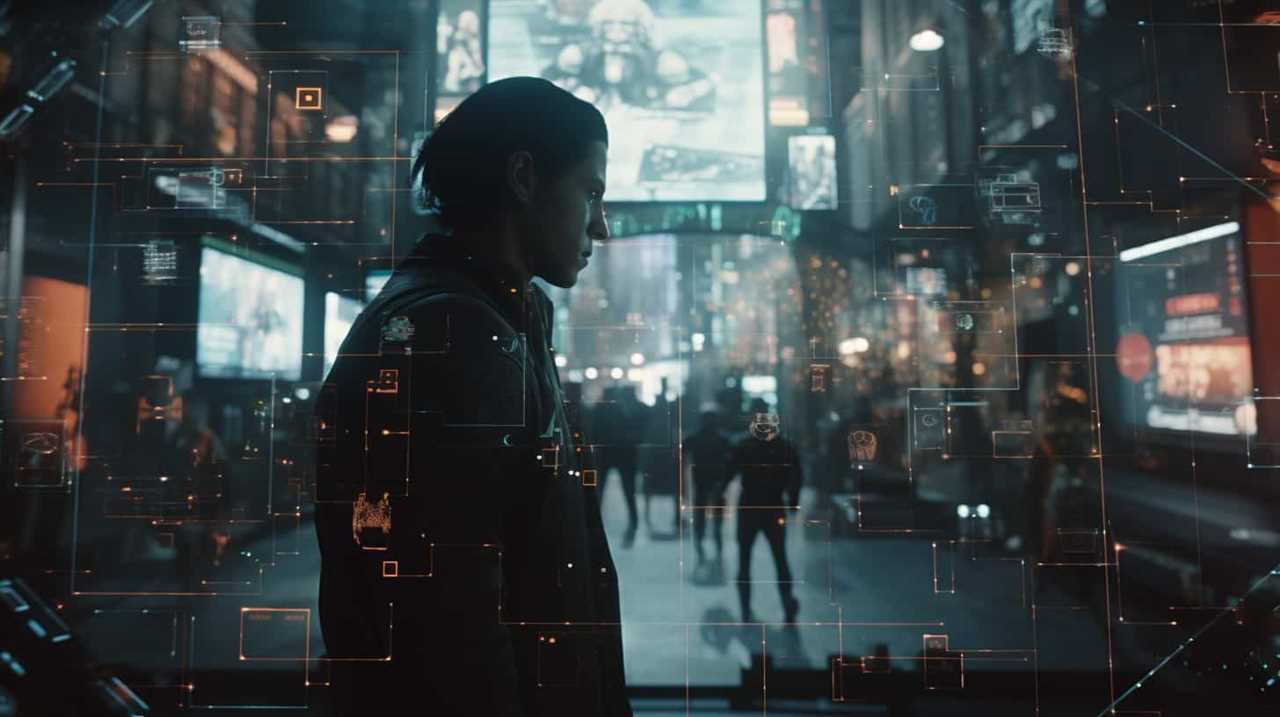
With real-time generation and procedural content, generative AI has the potential to transform the way games are created, played, and experienced. By leveraging the capabilities of AI algorithms, games can dynamically generate content, adapt to player behaviors, and create unique experiences every time.
This opens up a world of possibilities for developers and players alike, as games become more immersive, personalized, and endlessly engaging.
As generative AI continues to evolve, we can expect to see even more creative and innovative game experiences, blurring the boundaries between virtual reality and real-life experiences.
Blurring the Boundaries: Virtual Reality and Real-Life Experiences
Virtual reality and generative AI are revolutionizing gaming by blurring the boundaries between virtual experiences and real life. The integration of virtual reality technology into gaming has opened up a whole new world of possibilities, allowing players to immerse themselves in realistic simulations like never before.
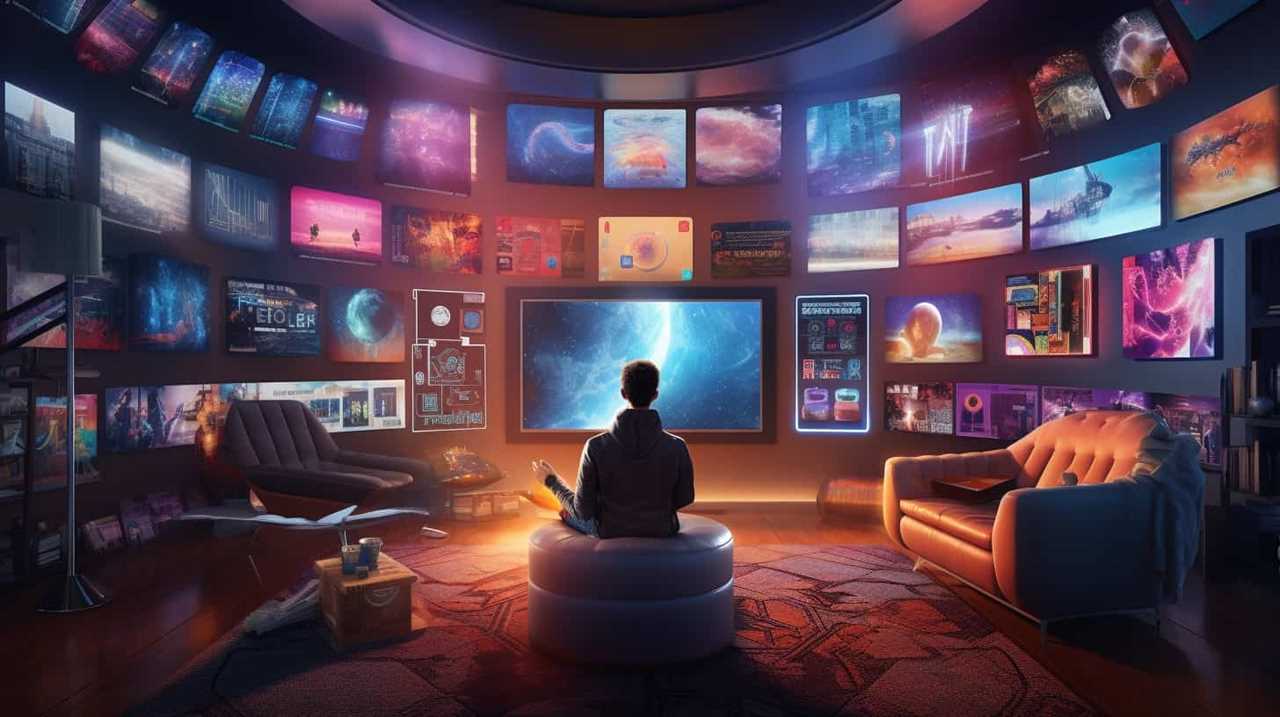
Here are four ways in which virtual reality is transforming the gaming landscape:
- Lifelike Environments: With virtual reality, gamers can explore incredibly detailed and visually stunning worlds that feel incredibly real, from bustling cityscapes to fantastical realms.
- Physical Interaction: Virtual reality controllers and motion tracking technology enable players to physically interact with the virtual environment, adding a whole new layer of immersion and realism to gaming experiences.
- Emotional Connection: By placing players directly in the shoes of their virtual avatars, virtual reality allows for a deeper emotional connection with the game world and its characters, enhancing the overall gaming experience.
- Real-Life Skill Development: Virtual reality simulations provide a platform for players to develop real-life skills, such as problem-solving, teamwork, and decision-making, in a safe and controlled environment.
Virtual reality integration in gaming isn’t just about creating a more visually impressive experience; it’s about blurring the boundaries between virtual and real-life experiences, taking gaming to a whole new level of immersion and interactivity. As technology continues to advance, the potential for even more realistic simulations and experiences is limitless, opening up exciting possibilities for the future of gaming.
Enhancing Immersion: Virtual Reality and Storytelling in Gaming
Building upon the previous subtopic’s exploration of virtual reality’s impact on gaming, we now delve into the realm of enhancing immersion through the integration of virtual reality and storytelling in gaming. Virtual reality has the potential to create a deeper emotional connection between players and the game world. By immersing players in a virtual environment, it becomes easier for them to empathize with the characters and become emotionally invested in the narrative. This heightened sense of presence allows for a more engaging and impactful storytelling experience.
Additionally, virtual reality can also enhance player agency, giving them a greater sense of control and freedom within the game. The immersive nature of virtual reality technology allows players to physically interact with the virtual world, making their actions feel more tangible and meaningful. This increased agency not only enhances the gameplay experience but also allows for more personalized and dynamic narratives.
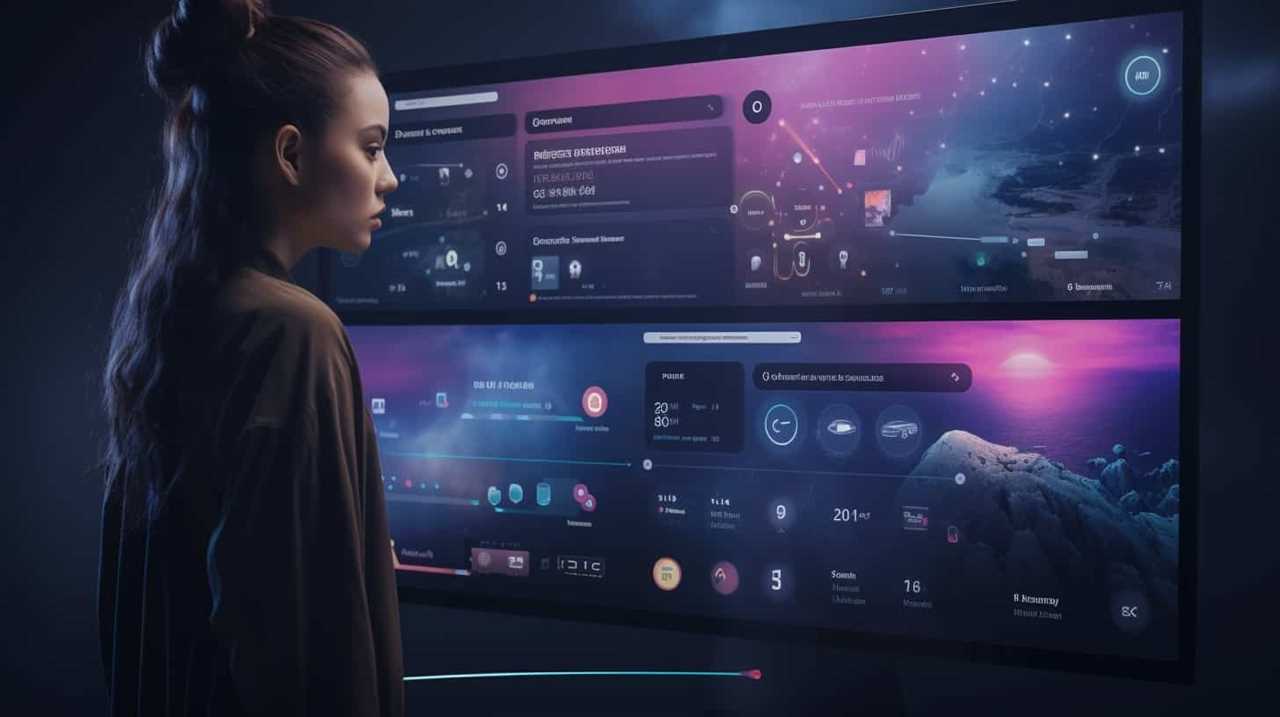
| Virtual Reality and Emotional Connection | Virtual Reality and Player Agency |
|---|---|
| – Deepens emotional connection between players and game world | – Enhances player control and freedom |
| – Facilitates empathy and emotional investment in the narrative | – Makes player actions feel more tangible and meaningful |
| – Creates a more engaging and impactful storytelling experience | – Allows for personalized and dynamic narratives |
The Future of Gaming: Virtual Reality and Generative AI
Our exploration into the future of gaming now turns toward the transformative potential of integrating virtual reality and generative AI. These cutting-edge technologies are poised to revolutionize the gaming industry, offering players a more immersive and dynamic experience than ever before. Here are four ways in which virtual reality and generative AI will shape the future of gaming:
- Virtual reality and esports: With the integration of virtual reality, esports will reach new heights of realism and engagement. Players will be able to step into the virtual world and compete in thrilling tournaments, feeling as if they’re truly part of the action.
- Enhanced game development: Generative AI algorithms will empower game developers to create vast and ever-evolving virtual worlds. These intelligent systems will generate unique content, such as landscapes, characters, and quests, ensuring that each gaming experience is fresh and personalized.
- Immersive storytelling: Virtual reality and generative AI will enable game developers to craft immersive narratives that respond to player choices and actions. Players will have the freedom to shape the story in real-time, creating a truly personalized and interactive storytelling experience.
- Social interactions: Virtual reality will bridge the gap between players, allowing them to connect and interact in virtual spaces. With generative AI, NPCs (non-playable characters) will become more lifelike and responsive, enriching social interactions and fostering a sense of community within the gaming world.
Frequently Asked Questions
What Are Some of the Challenges That Virtual Reality Technology Has Faced in Its Evolution in Gaming?
In the evolution of gaming, VR technology has faced various challenges. These challenges include hardware limitations, motion sickness, and high costs. However, as technology advances, we anticipate these obstacles being overcome, unlocking the full potential of virtual reality in gaming.
How Does Generative AI Technology Contribute to the Overall Gaming Experience?
Generative AI technology enhances the overall gaming experience by allowing for personalized game customization. It brings virtual reality immersion and gameplay to new heights, giving players the freedom to explore and interact in unique and dynamic virtual worlds.
Can Virtual Reality Technology Really Blur the Boundaries Between Virtual and Real-Life Experiences in Gaming?
Virtual reality has the potential to blur the boundaries between virtual and real-life experiences in gaming. Its impact on player immersion and implications for game design are exciting, offering a new level of freedom and immersive gameplay.
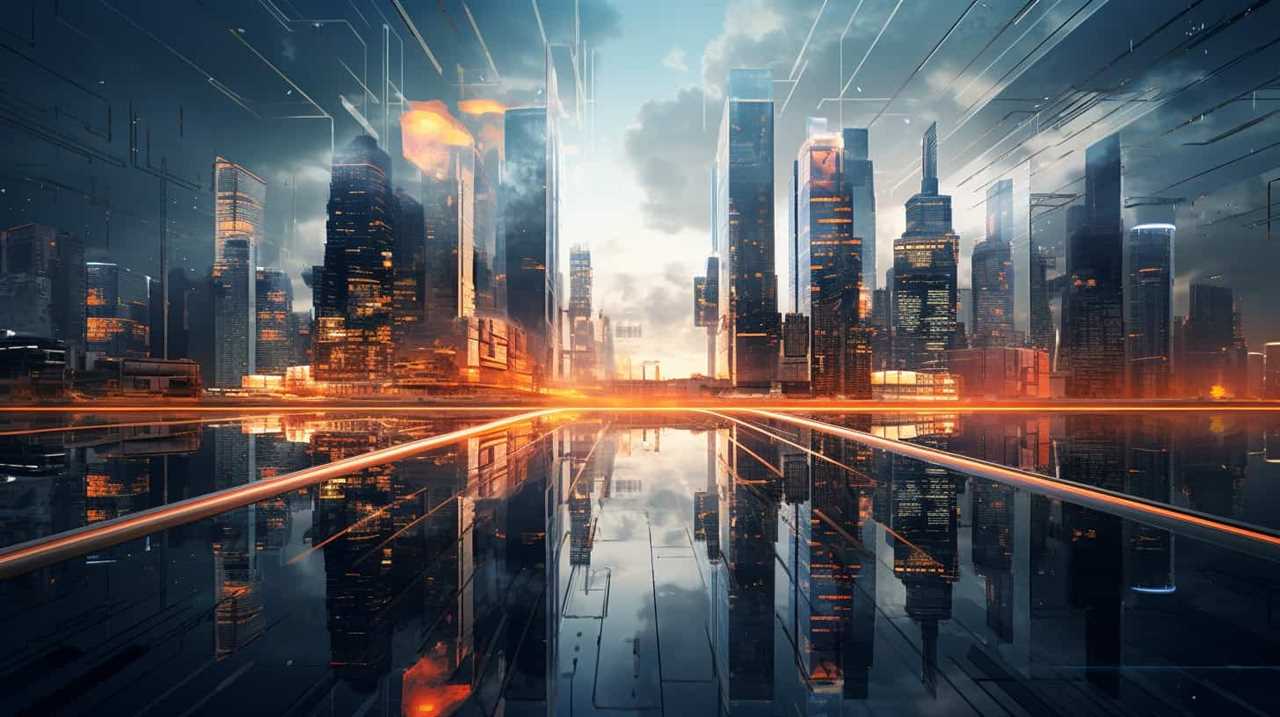
How Does Virtual Reality Technology Enhance Storytelling in Gaming?
Enhancing immersion and creating emotional connections are two ways virtual reality technology enhances storytelling in gaming. It allows us to step into the shoes of characters, experience their world, and forge a deeper bond with the narrative.
What Are Some Potential Future Advancements in Virtual Reality and Generative AI Technology That Could Revolutionize the Gaming Industry?
Potential applications of virtual reality and generative AI technology could revolutionize the gaming industry. These advancements have the potential to greatly enhance player immersion, creating more realistic and interactive experiences that will redefine the future of gaming.
Conclusion
In conclusion, as virtual reality continues to evolve and the power of generative AI is harnessed, gaming’s future holds immense potential.
Just like a painter’s brush on a blank canvas, these technologies will paint a vivid and immersive gaming experience that blurs the boundaries between virtual and real-life.
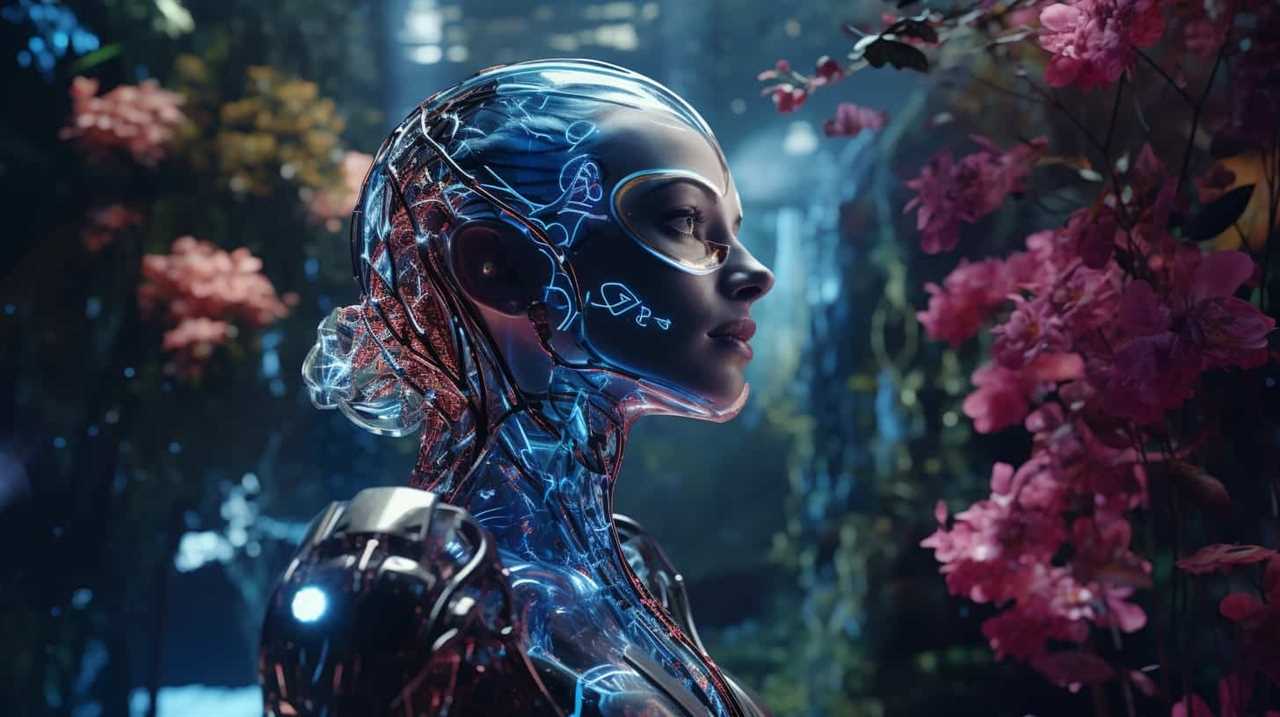
With enhanced storytelling and immersion, the future of gaming is set to be a captivating journey, transporting players into new and exciting worlds.
AI Entertainment
Unlocking Creativity: Generative AI for Content Generation

Ladies and gentlemen, prepare to be astonished as we delve into the world of generative AI for content creation. This cutting-edge technology grants us access to new heights of creativity.
From captivating copy to stunning visuals, the possibilities are endless. Join us as we explore the benefits, implementation techniques, and future possibilities of harnessing the power of generative AI to revolutionize content creation.
Innovation awaits!
Key Takeaways
- Generative AI revolutionizes machine-generated content and enables the creation of text, images, and videos with human-like creativity.
- Using generative AI in content creation increases efficiency, enhances engagement, drives innovation, and improves the user experience.
- Implementing generative AI techniques requires addressing ethical implications, limitations, and the need for human intervention and oversight.
- To harness creativity with generative AI, embrace experimentation, treat AI as a creative partner, iterate and refine generated content, and maximize its capabilities.
Understanding Generative AI for Content Generation
In this article, we’ll delve into the inner workings of generative AI for content generation. AI-driven creativity has revolutionized the way we explore machine-generated content. With advancements in artificial intelligence, we now have the ability to create unique and innovative content through the power of algorithms.
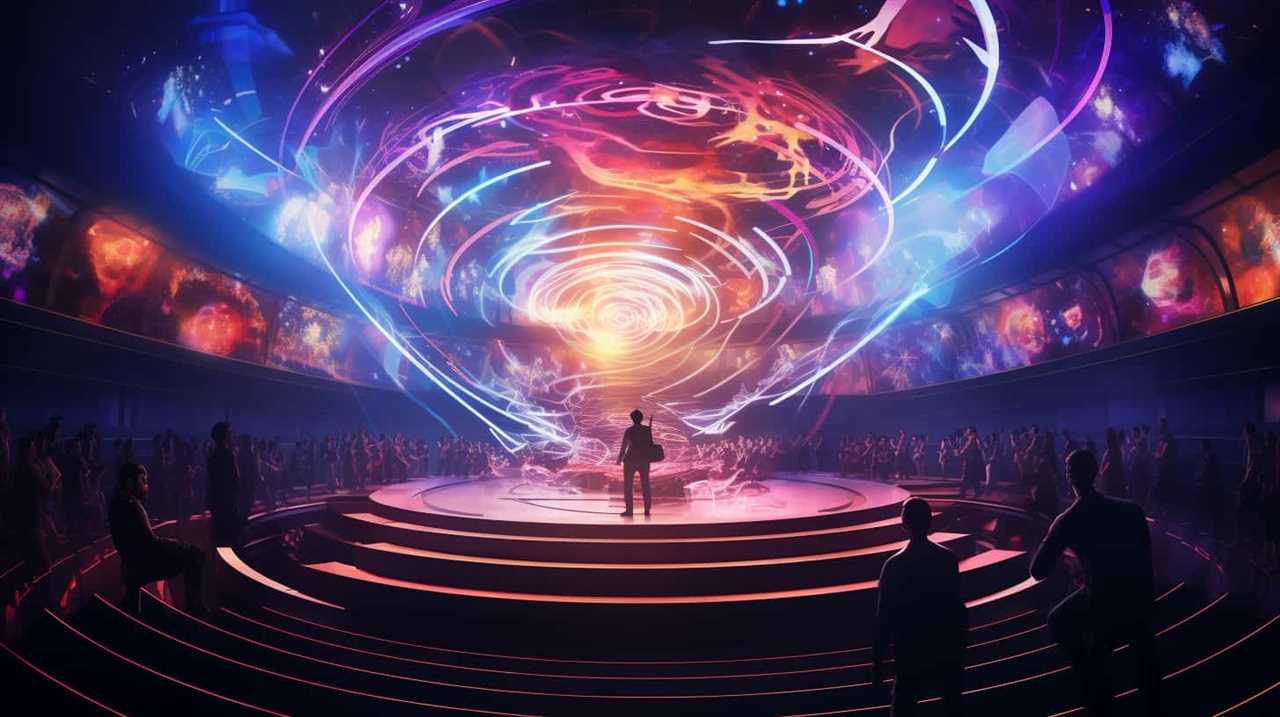
This technology allows us to generate text, images, and even videos that possess a level of creativity previously thought to be exclusive to human beings. By exploring machine-generated content, we open up new avenues for creativity and innovation.
Generative AI has the potential to augment human creativity, providing us with fresh ideas, perspectives, and inspiration. It enables us to push the boundaries of what’s possible in content creation and opens up exciting possibilities for industries such as advertising, entertainment, and marketing.
Benefits of Using Generative AI in Content Creation
By harnessing the power of generative AI, we can unlock a myriad of benefits in content creation that enhance our creative capabilities and drive innovation.
- Increasing Efficiency: Generative AI automates the content creation process, allowing us to produce high-quality content at a faster rate. It eliminates the need for manual tasks, such as researching and brainstorming, freeing up valuable time for more strategic and creative work.
- Enhancing Engagement: Generative AI enables us to create personalized and interactive content that resonates with our audience. By analyzing user preferences and behaviors, it generates content that’s tailored to their interests and needs. This level of personalization enhances engagement and improves the overall user experience.
- Driving Innovation: Generative AI pushes the boundaries of creativity by generating unique and original ideas. It can generate content that humans may not have thought of, inspiring new perspectives and innovative approaches. By leveraging generative AI, we can stay ahead of the competition and continuously innovate in the content creation landscape.
Implementing Generative AI Techniques for Content Generation
To effectively implement generative AI techniques for content generation, we can leverage its capabilities to enhance our creative process and drive innovation. However, it’s crucial to consider the ethical implications of using generative AI for content creation. Questions arise regarding ownership, authenticity, and the potential for misuse.
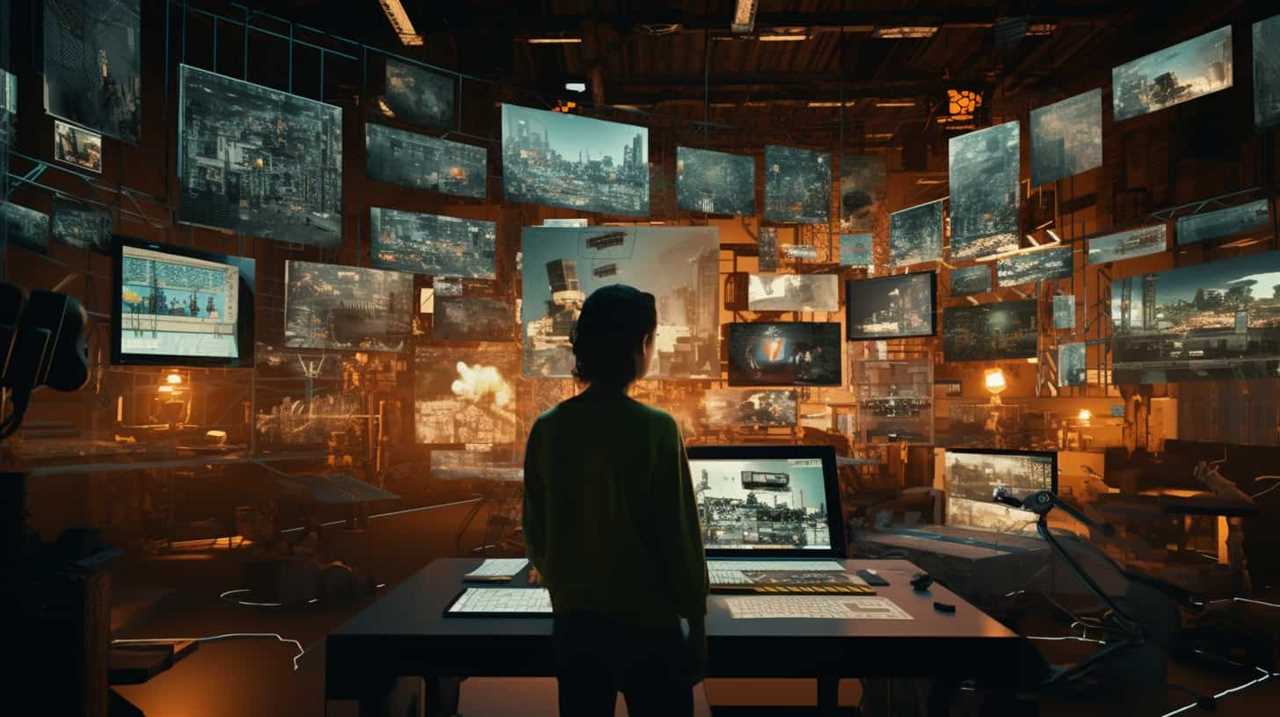
Additionally, there are limitations and challenges to implementing generative AI in this context. The technology may not always produce high-quality or relevant content, requiring human intervention and oversight. Moreover, generative AI models require large amounts of data to perform optimally, which may pose privacy concerns.
Despite these challenges, the potential for generative AI in content creation is immense. By understanding its limitations and addressing ethical considerations, we can harness its power to unlock new levels of creativity and inspiration.
Now, let’s explore some tips for effectively harnessing creativity with generative AI.
Tips for Harnessing Creativity With Generative AI
We can effectively harness our creativity with generative AI by exploring its potential and utilizing its capabilities to drive innovation and inspire new content ideas.
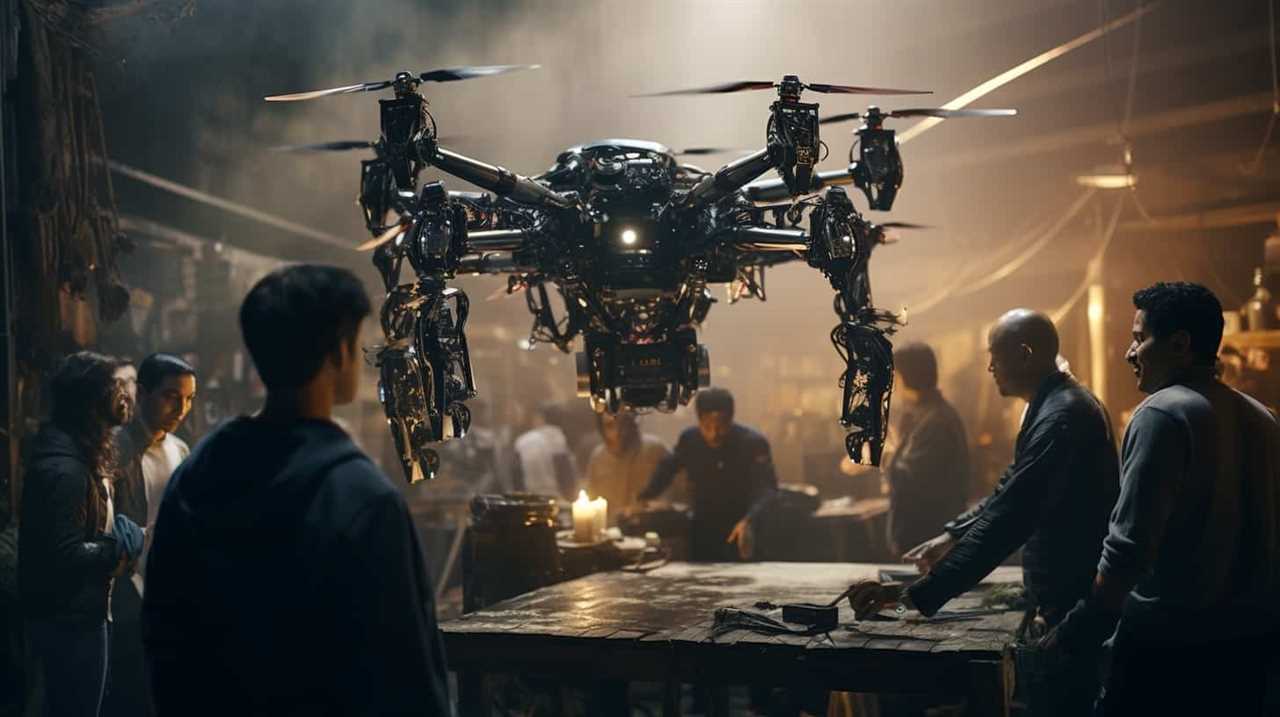
Here are three tips for maximizing the creative potential of generative AI:
- Embrace experimentation: Don’t be afraid to try new approaches and test different parameters. Generative AI thrives on experimentation, so be open to exploring various possibilities and combinations.
- Collaborate with AI: Treat generative AI as a creative partner rather than a replacement. Work alongside the AI system, providing it with guidance and feedback. This collaborative approach can lead to unexpected and exciting outcomes.
- Iterate and refine: Use generative AI as a starting point and then iterate and refine the generated content. By adding your own unique perspectives and insights, you can enhance the AI-generated ideas and make them truly innovative.
Future Possibilities of Generative AI in Content Generation
The future of generative AI in content generation holds immense potential for expanding creative possibilities. However, it’s crucial to address the ethical concerns surrounding this technology.
As generative AI becomes more advanced, there’s a need to establish guidelines for its responsible use. Questions about ownership, plagiarism, and the authenticity of content created by AI arise.
Additionally, the impact of generative AI on traditional creative industries can’t be ignored. While AI can assist in generating content at a faster pace, it may also disrupt the livelihoods of individuals in fields such as writing, design, and music composition.
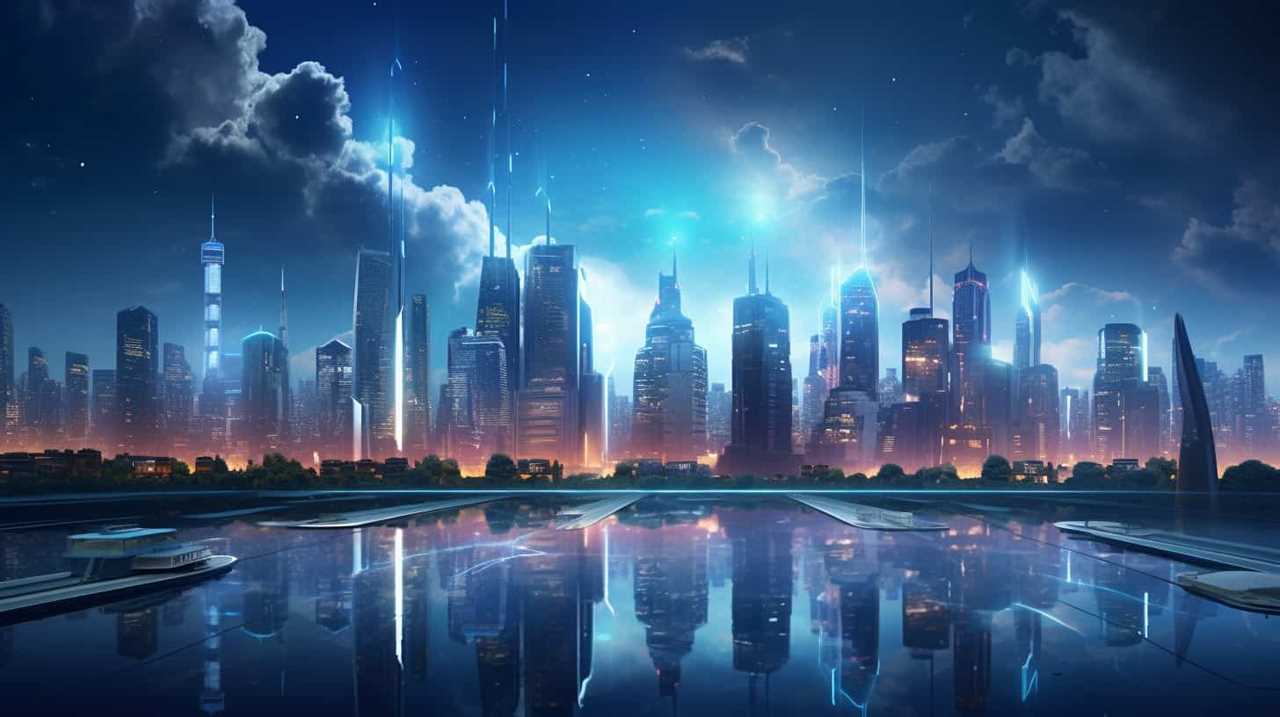
It’s important to find a balance where generative AI can enhance creativity while preserving the value and integrity of human creativity.
Frequently Asked Questions
What Is the Difference Between Generative AI and Other Forms of Artificial Intelligence?
Generative AI, unlike other forms of AI, focuses on creating original content rather than mimicking existing data. It has vast applications in art and design, pushing the boundaries of creativity, and has the potential to revolutionize storytelling in the future.
Can Generative AI Be Used for Content Generation in All Industries?
Generative AI has the potential to revolutionize content generation across industries. Its role in improving content quality and impact on marketing strategies cannot be underestimated. It’s like a creative powerhouse on steroids.
Are There Any Ethical Concerns With Using Generative AI for Content Creation?
There are ethical implications to consider when using generative AI for content creation. It has the potential to impact creativity by automating tasks, but we must ensure it doesn’t replace human ingenuity and originality.
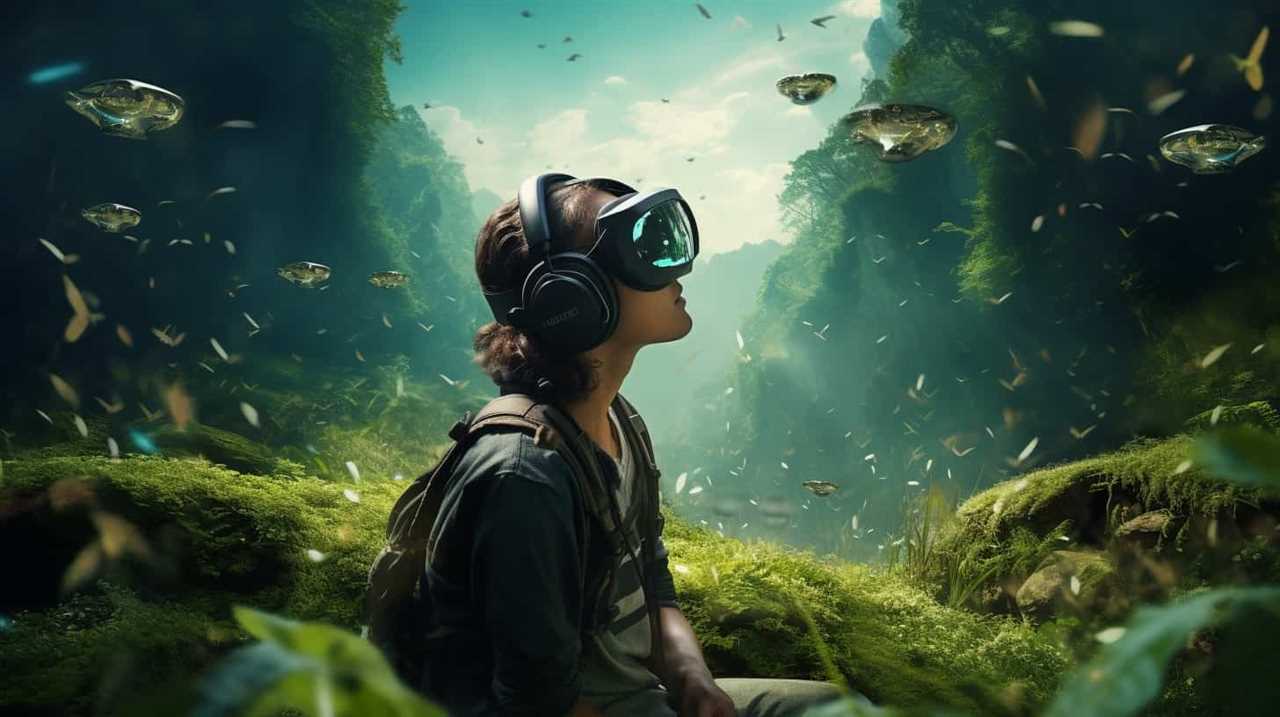
What Are the Limitations of Generative AI in Content Generation?
Generative AI in content generation has its limitations. Ethical implications arise due to potential biases embedded in the AI algorithms. However, with careful monitoring and continuous improvement, we can unlock its true potential for innovative and creative content creation.
How Can Businesses Ensure the Content Generated by Generative AI Aligns With Their Brand Image and Values?
To maintain brand consistency with generative AI, we balance creativity and brand guidelines. By setting clear parameters and regularly reviewing the content, businesses can ensure that the AI-generated content aligns with their brand image and values.
Conclusion
In conclusion, generative AI is revolutionizing content creation, unlocking a world of limitless possibilities. With its ability to generate unique and creative content, it has become an indispensable tool for writers, marketers, and artists alike.
By harnessing the power of generative AI, we can tap into our creativity like never before, producing captivating and original work. The future of content generation is bright, and with generative AI leading the way, we’re on the brink of a new era of innovation and imagination.
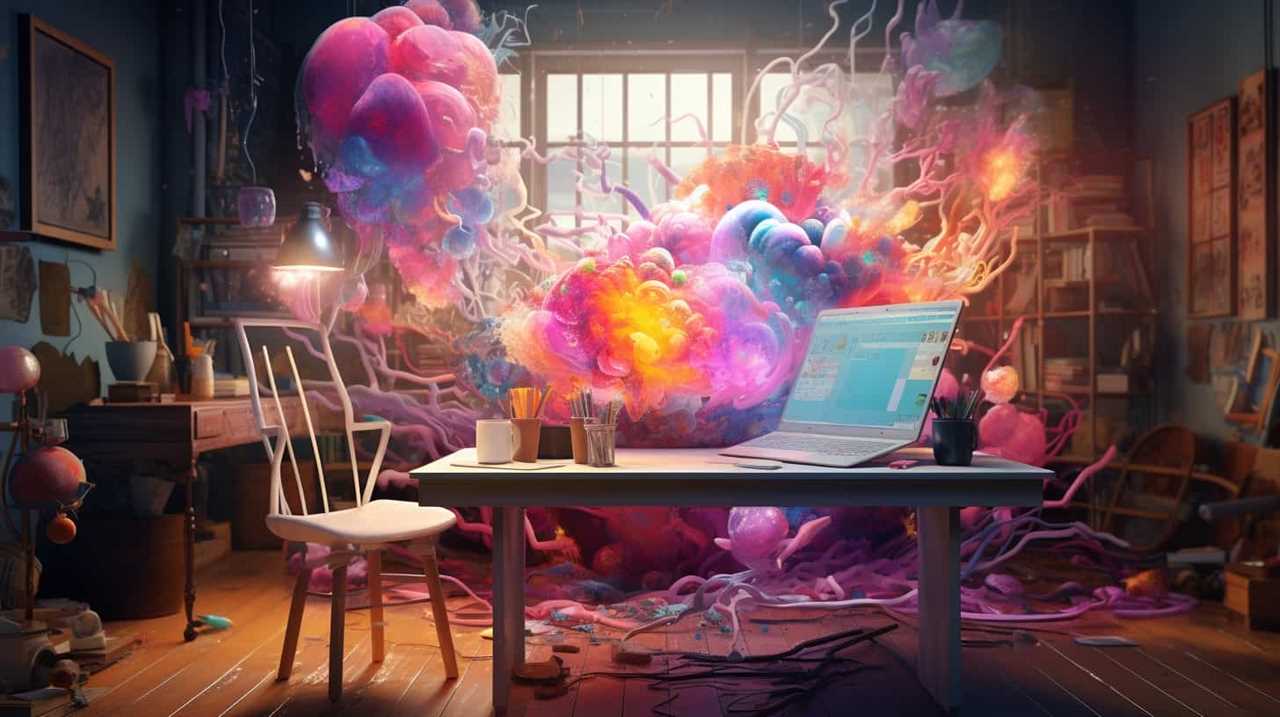
So, let’s embrace this technological marvel and unleash our creative potential!
Bennett is the embodiment of versatility, adapting his writing to cover a broad spectrum of topics with professionalism and flair. Whether it’s breaking news, in-depth analyses, or feature pieces, Bennett’s contributions enrich Press Report with diverse perspectives and engaging content. His adaptability and keen journalistic instincts make him a vital member of our team, capable of capturing the essence of the moment in every story.
-

 AGI and AI Impact on Human Relationships6 days ago
AGI and AI Impact on Human Relationships6 days agoIs the Threat of AI Overblown? Unpacking Myths
-

 AI in Business3 weeks ago
AI in Business3 weeks agoAI at Work Beyond Cloud Cuts Company Costs
-

 AGI and AI Impact on Human Relationships2 days ago
AGI and AI Impact on Human Relationships2 days agoIs AGI a Threat to Humanity? Explore the Risks
-

 AGI and AI Impact on Human Relationships2 weeks ago
AGI and AI Impact on Human Relationships2 weeks agoAGI and AI’s Effect on Human Relationships
-

 AGI and AI Impact on Human Relationships4 weeks ago
AGI and AI Impact on Human Relationships4 weeks agoImpact of Artificial Intelligence on Humanity
-

 AGI and AI Impact on Human Relationships3 weeks ago
AGI and AI Impact on Human Relationships3 weeks ago1X Technologies Androids Built to Benefit Society
-

 AGI and AI Impact on Human Relationships2 weeks ago
AGI and AI Impact on Human Relationships2 weeks agoAI’s Influence on Society: Insights & Outlook
-

 AGI and AI Impact on Human Relationships2 weeks ago
AGI and AI Impact on Human Relationships2 weeks agoConsequences of Reaching AGI Unveiled
















